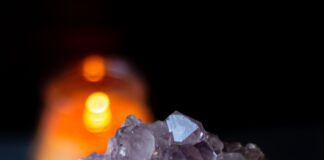Rubidium is an alkali metal with the symbol Rb and atomic number 37. It is a soft, silvery-white metallic element that belongs to the Group 1 of the periodic table, which is also known as the alkali metal group. Rubidium is an abundant element in the Earth’s crust, though it is not found in its pure form due to its highly reactive nature. Instead, it occurs in various minerals, often in association with potassium and other alkali metals. Rubidium has several unique properties and applications across different scientific and industrial fields.
In terms of abundance, rubidium ranks as the 16th most abundant element in the Earth’s crust, with an estimated concentration of approximately 90 parts per million. The most common minerals containing rubidium include lepidolite, pollucite, and carnallite. One of the largest sources of rubidium is found in pollucite deposits, which are often mined as a byproduct of lithium extraction.
Rubidium’s physical and chemical properties are similar to those of other alkali metals. It has a relatively low melting point of about 39 degrees Celsius (102 degrees Fahrenheit) and a boiling point of approximately 688 degrees Celsius (1,270 degrees Fahrenheit). The metal is soft and easily cut, with a density of around 1.53 grams per cubic centimeter, making it one of the least dense metals. It is highly reactive, especially with water and oxygen, and must be stored under a mineral oil or inert atmosphere to prevent rapid oxidation.
The unique characteristics of rubidium have led to its utilization in various scientific and industrial applications. One of the significant uses of rubidium is in the field of atomic clocks. Rubidium atomic clocks are highly accurate timekeeping devices that rely on the vibrations of rubidium atoms to measure time. These clocks find applications in GPS satellites, telecommunication networks, and scientific research, where precise timing is crucial.
Moreover, rubidium has found applications in the field of spectroscopy. Due to its single valence electron, rubidium exhibits a distinct spectral pattern when exposed to specific wavelengths of light. This property makes it valuable in scientific research and analytical techniques, such as atomic absorption spectroscopy and laser cooling experiments.
In recent years, rubidium has gained prominence in the field of quantum physics and quantum computing. Researchers use rubidium atoms to create Bose-Einstein condensates, a state of matter where atoms lose their individuality and behave as a single quantum entity. This state allows scientists to study fundamental aspects of quantum mechanics and develop potential applications in quantum computing and quantum information processing.
In addition to its scientific applications, rubidium has some industrial uses. It can be alloyed with other metals to improve their properties, such as adding small amounts of rubidium to titanium to enhance its strength and corrosion resistance. Furthermore, rubidium compounds have been investigated for their potential in catalysts and glass production.
Despite its various applications, rubidium remains a relatively niche element compared to more commonly used metals like iron or aluminum. Its limited commercial use is primarily due to the relatively high cost of extraction and purification processes. Additionally, the development of alternative technologies in certain applications, such as atomic clocks, has influenced its demand.
From a health and environmental perspective, rubidium is not considered toxic, and its presence in the environment has minimal adverse effects. However, like other alkali metals, it can be hazardous in its reactive forms, and precautions should be taken when handling rubidium and its compounds.
Moreover, rubidium has also found applications in the field of electronics and optoelectronics. Rubidium vapor can be utilized in the creation of efficient and compact semiconductor diode lasers. These lasers emit light in the near-infrared region and have applications in telecommunications, laser pointers, and laser scanning devices. The unique spectral properties of rubidium have made it an essential component in gas-discharge lamps used in some specialized lighting applications.
Rubidium’s chemical reactivity also extends to its biological interactions. Although not considered essential for human health, trace amounts of rubidium can be found in certain foods and beverages. Some studies suggest that rubidium may play a role in the regulation of glucose metabolism and insulin sensitivity, though further research is required to fully understand its potential impact on human physiology.
The history of rubidium’s discovery dates back to the early 19th century. In 1861, German chemists Robert Bunsen and Gustav Kirchhoff isolated the element spectroscopically from samples of lepidolite, a mineral rich in rubidium. The name “rubidium” originates from the Latin word “rubidus,” which means “deep red.” This name was given due to the crimson color of rubidium’s spectral lines observed during the flame test conducted by Bunsen and Kirchhoff.
The extraction of rubidium from minerals involves several steps, starting with the extraction of the mineral from the Earth’s crust. Once obtained, the mineral is crushed, and the rubidium-bearing portion is separated from other components. The rubidium-rich material undergoes further purification processes, including chemical treatments and electrolysis, to obtain pure rubidium metal.
In recent years, the potential applications of rubidium in advanced technologies have spurred increased research and exploration. Its role in quantum computing and quantum information processing has garnered significant attention due to the unique properties of quantum systems in which rubidium plays a vital role. Quantum computers using rubidium-based technologies have the potential to revolutionize computing capabilities by exponentially increasing processing power and solving complex problems that are currently computationally infeasible.
Additionally, rubidium’s use in atomic clocks remains pivotal for ensuring precise global timekeeping. As our world becomes increasingly interconnected and reliant on accurate timekeeping for various applications, the demand for more advanced and accurate atomic clocks continues to grow. Rubidium-based atomic clocks have proven to be a reliable and practical solution, and ongoing research aims to further improve their accuracy and efficiency.
Furthermore, research on rubidium as a catalyst and its potential application in energy storage systems shows promise. As the world seeks sustainable and efficient ways to generate and store energy, novel materials and technologies that leverage rubidium’s unique properties could play a significant role in shaping the future of energy systems.
In conclusion, rubidium, as an alkali metal, holds tremendous potential across various scientific, industrial, and technological domains. From its applications in atomic clocks, spectroscopy, and quantum physics to its role in optoelectronics and electronics, rubidium’s versatility continues to intrigue researchers and engineers alike. Despite its current limitations in commercial applications due to extraction costs and the development of alternatives, ongoing research and advancements in technology may unlock even more exciting possibilities for this intriguing element in the years to come. As we delve deeper into the intricacies of rubidium’s properties and its interactions with other materials, we will undoubtedly witness further breakthroughs that could revolutionize industries and our understanding of fundamental physics and chemistry.














